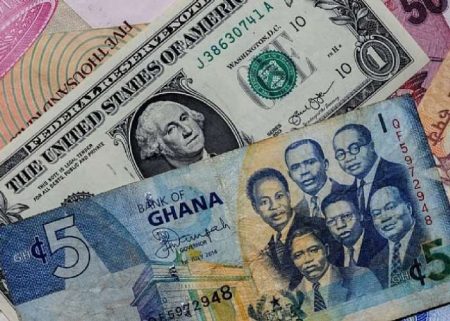The Ghanaian cedi experienced volatility against major international currencies on Saturday, September 20, 2025, exhibiting discrepancies in exchange rates across various market segments. Data compiled from Cedirates.com, a trusted source for currency and fuel pricing information in Ghana, reveals a dynamic interplay between interbank rates, forex bureau rates, and rates offered by money transfer operators. This multifaceted landscape underscores the complexities of the Ghanaian foreign exchange market and its impact on businesses, individuals, and the economy as a whole. The fluctuations observed on this particular day highlight the challenges in navigating currency conversions and the importance of staying informed about prevailing market conditions.
The interbank market, facilitated by the Bank of Ghana, served as a benchmark for official exchange rates. On September 20, 2025, the cedi traded at GHS12.26 for buying and GHS12.28 for selling against the US dollar, indicating a relatively stable interbank rate. This contrasts with the wider spread observed at forex bureaus, where the buying rate averaged GHS12.18 and the selling rate GHS12.74. Furthermore, individual forex bureaus quoted rates as high as GHS13.00 for buying dollars and GHS13.45 for selling, reflecting the competitive nature of the retail foreign exchange market and potentially higher profit margins sought by these businesses.
For the British pound, the interbank rate as quoted by the Bank of Ghana stood at GHS16.55. Forex bureaus, on the other hand, presented a wider range, with average buying and selling rates of GHS16.38 and GHS17.21, respectively. Similarly, the euro’s interbank rate was recorded at GHS14.43, while forex bureaus averaged GHS14.28 for buying and GHS14.99 for selling. These disparities between interbank and forex bureau rates highlight the markups applied by retail currency exchangers and the potential cost implications for individuals or businesses conducting foreign exchange transactions through these channels.
Money transfer operators, catering to the remittance market, offered slightly different rates. LemFi and Taptap Send, two prominent players in this space, quoted rates of GHS12.30 and GHS12.25, respectively, for dollar remittances from the US or UK to Ghana. For British pound remittances, LemFi offered GHS16.70, while Taptap Send offered GHS16.77. Euro remittances were quoted at GHS14.48 by LemFi and GHS14.50 by Taptap Send. These rates, while competitive with both interbank and forex bureau rates, reflect the specialized nature of money transfer services and their associated fees and operational costs.
Digital subscriptions, a growing segment of international transactions, also saw specific exchange rates applied. Payments for services like Netflix, Spotify, and Apple Music using Visa and Mastercard were processed at GHS13.16 and GHS13.21, respectively. These rates, falling within the range observed across other market segments, demonstrate the influence of payment processors and card networks on international transactions and the associated foreign exchange conversions.
In conclusion, the Ghanaian cedi’s performance against major currencies on September 20, 2025, showcased the dynamic and fragmented nature of the foreign exchange market. The variations in rates across different channels, from the interbank market to forex bureaus and money transfer operators, underscore the importance of comparing rates and selecting the most favorable option based on specific transaction needs. This fluctuating landscape further emphasizes the need for businesses and individuals engaged in international transactions to stay informed about market conditions and consider the potential impact of currency fluctuations on their financial activities. The data provided by Cedirates.com provides valuable insight into the prevailing exchange rates and serves as a helpful resource for navigating the complexities of the Ghanaian foreign exchange market.














